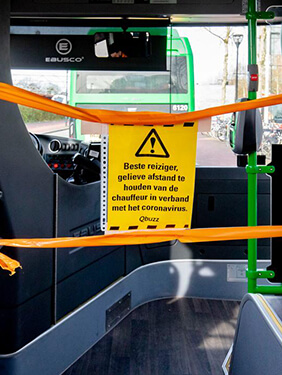Welcome to Guardian One


Crisis Management Team is an initiative of Guardian One Passenger Transport which strengthens the approach to school safety. It focuses more narrowly on a time-limited, problem-focused intervention to identify, confront and resolve the crisis, restore equilibrium, and support appropriate adaptive responses. “Crises” shall include but not be limited to situations involving a school bus accident, serious injury or death of a student, staff member, or a member of a student’s immediate family. The General Manager shall have the authority to determine what is a crisis incident and to convene the Crisis Management Team. “Critical incidents” shall include situations involving threats of harm to students, personnel, or facilities. Critical incidents are not only limited to vehicle accidents, but include natural disasters, fire, use of weapons/explosives, and the taking of hostages. Such incidents require an interagency response involving law enforcement and/or emergency services agencies.
The objectives of the Crisis Management Team are to implement and adapt appropriate action from the Crisis Management Plan to address the specific events of the crisis. Roles and responsibilities of team members and consultants are established in writing by G1.
The Crisis Management Plan includes pre-planning, intervention / response and post-incident activities, communication and controlling the crisis.
The single most effective way of dealing with a crisis situation, critical incident or medical emergency is through the use of a Crisis Management Team (CMT). The CMT is an organized group involving the members of Guardian One Passenger Transport and school-based faculty / staff members created to assist the Principal in planning for and responding to emergency situations. These staff members will be trained in the implementation of the G1’s Crisis Management Plan. The Principal of the School will designate staff members to serve as part of the CMT and designate a CMT member to act in the Principal’s absence. There may be instances when time-sensitive decisions have to be made quickly by the Principal without consulting the CMT. The members of each school’s CMT should consist of an immediately accessible core group of school personnel who have the knowledge and skills to deal with an emergency situation. There are no formal standards for the number of members that should be on the team. The CMT composition varies depending upon the size and type of school, the availability and expertise of the individual members, and the potential hazards threatening the school. In addition to the school Principal and Head of School, members may include School counselor(s), the school doctor or nurse, Manager Administration, Academic Supervisors, and selected teacher(s). The HR and Admin Manager / Coordinator of Guardian One would be free to assist with other tasks such as first aid, parent and student reunification or information/media liaison. Individual roles and responsibilities of team members are recorded and shared with respective schools. CMT members should be equipped with immediate contact numbers. This team cannot be put together when the crisis, critical incident or emergency is unfolding. Each member must be in place and comfortable with his or her role before an incident occurs. The CMT needs to become a formal part of each school. The CMT should meet on a regular basis and discuss not only the crisis management plan but also any areas of concern in the school. All members should receive information and training regularly. Crisis planning involves more than developing procedures for responding to critical incidents.
Have a plan: identify at least three pull-off places on the route that have officer friendly characteristics - Wide shoulder (somewhere on the route); Big space (e.g. vacant parking lot); Not populated
Be aware of student posture - might carry dangerous equipment or tool.
Crouching down or walking stiff - might carry dangerous equipment or tools.
Be aware of what is going on with students; Acting anxious or displaying unusual behaviour.
Always keep the mobile charged before trips - keep it in ready to use condition.
Be prepared to give useful information so responding agencies can find the bus quickly - location and direction of travel.
Follow the protocol to communicate to foreman / transport supervisors.
The students should not know the crisis response process. This process must stay with the staff. The assailant can get the information from the student and use it adversely.
The four crisis points are to be followed. If you observe suspicious behaviour, immediately inform the Risk Management Centre.
The alert can be either through mobile call or through the SMART Bus Monitor application (SOS)
When required, Drivers and Attendants should inform the ambulance and police accordingly.
It is important to remember that counting students that have fled the situation to gather up later is a much easier number to count than counting injured students on your bus that had an opportunity to flee.
Evacuate from the danger area and let students know where you want them to gather if you can. If you can't avoid it, you should deny it by maintaining closed entrances to your bus. Do whatever it takes to deny a potential assailant access inside the bus
Students look up to the Drivers and Bus Attendants for direction. The following methods must be followed by the staff to ensure the safety of the passengers:
Usage of calming techniques
Speaking in a calm voice
Speak respectfully